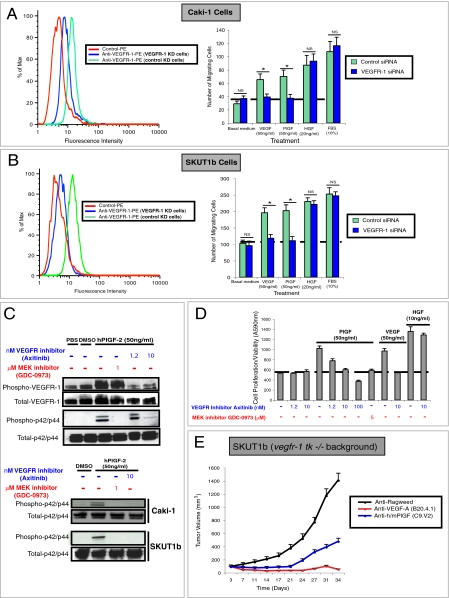Fig. 4.
Inhibition of PlGF/VEGFR-1 signaling in tumor but not stromal cells is a major determinant for anti-PlGF efficacy. (A and B, Left) VEGFR-1 siRNA but not control siRNA reduces VEGFR-1 expression by FACS. (A and B, Right) Effects of VEGFR-1 knock-down on migration of Caki-1 and SKUT1b cells in response to PlGF, VEGF, HGF, or 10% FBS. (C, Upper) Effects of axitinib (VEGFR inhibitor) and GDC-0973 on hPlGF-2-induced phosphorylation of VEGFR-1 and p42/p44 in HEK293-VEGFR-1 cells. (C, Lower) Effects of axinitinib and GDC-0973 on hPlGF-2-induced phosphorylation of p42/p44 in HEK-293-CAKI-1 and SKUT1b cells. (D) Effects of axinitinib and GDC-0973 on hPlGF-2-induced proliferation/survival of SKUT1b cells. Dotted lines represent basal levels of migration or proliferation. Experiments were repeated at least three times with comparable results. n = 3–5. Error bars represent SD. (E) Effects of anti-PlGF, anti-VEGF-A, or anti-ragweed mAb on the growth of tumors implanted in vegfr-1 tk−/−, rag2−/− mice. Antibodies were administered as indicated in Fig. 1 and in Materials and Methods. n = 10, relative to anti-ragweed treatment. Error bars represent SEM.

